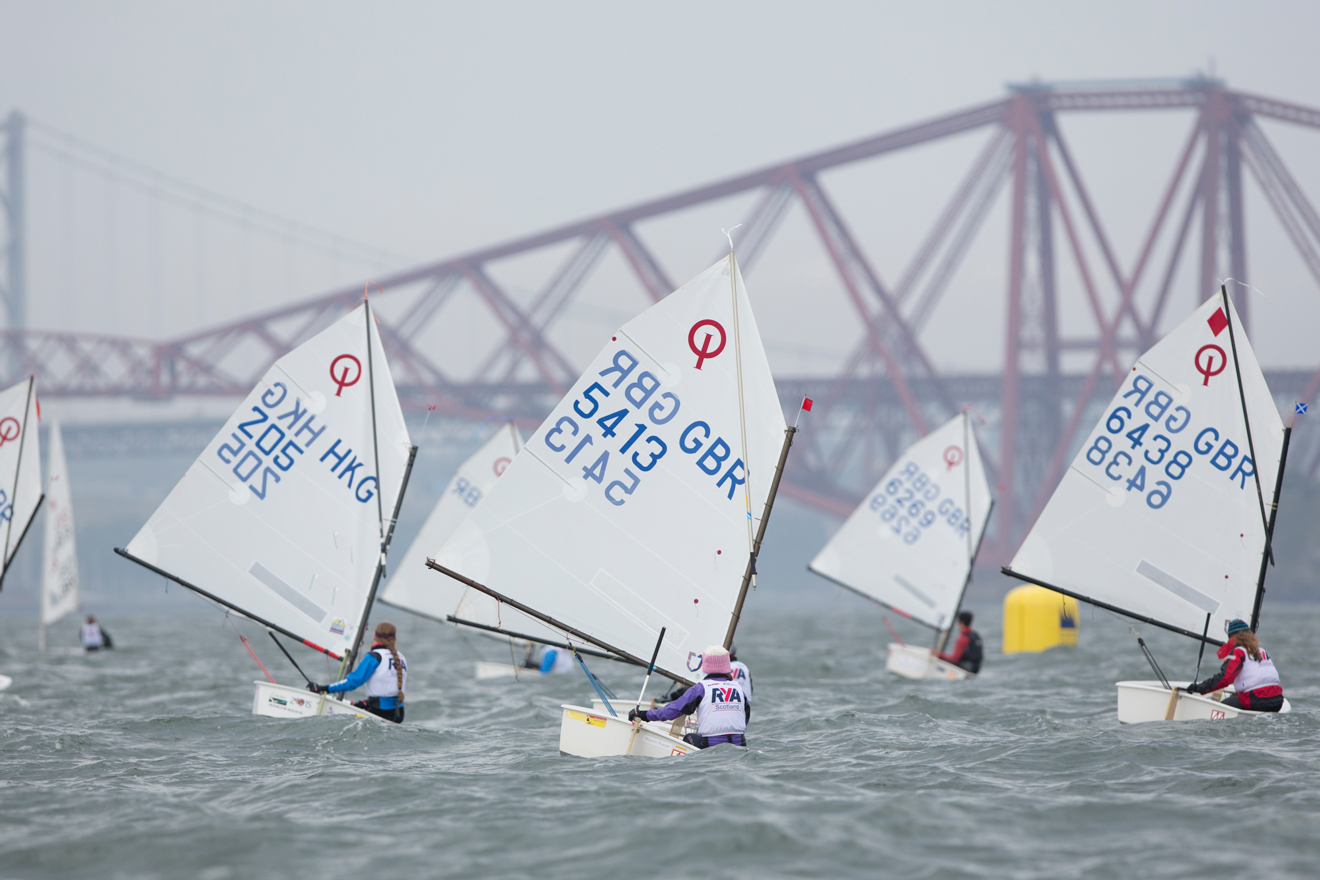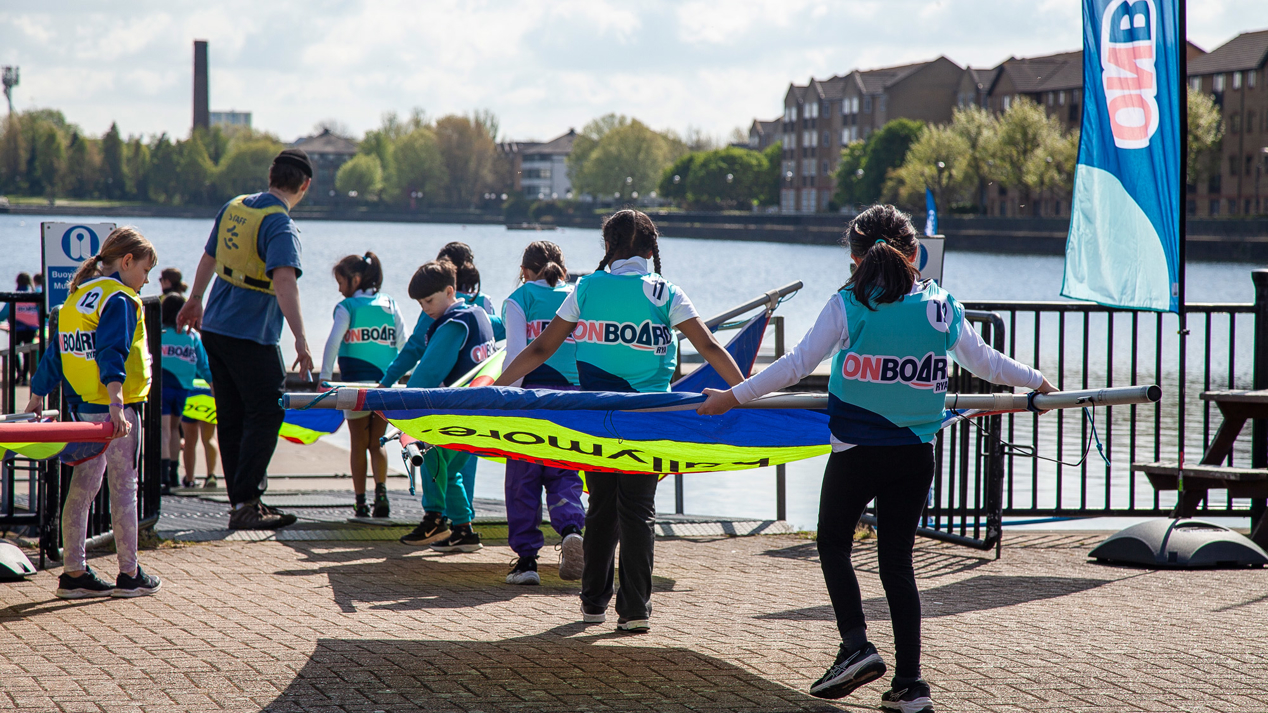Clothing & equipment advice
Buying new or second-hand? Essential advice before you take the plunge...
When you’ve learnt to sail or windsurf, the next step of getting your own equipment together can be daunting, but it needn’t be. There are plenty of manufacturers you can go to buy of the shelf, but the second-hand market is also strong.
We spoke to Adam McGovern, RYA North West Regional Development Officer, club sailor and Dad for the best tips and advice on where to look, and what to look for.
Adam, let’s talk about the big stuff – how do you go about purchasing a boat or board?
Firstly, I would always recommend joining a club where boats and boards are available for juniors to use, usually included within the cost of membership or for a small fee. Pay and play is also becoming more and more popular – where you can easily rent a boat or board for a set amount of time. Centres will often have this option, and some also have membership systems. So, the first thing to consider is if you even need to buy something yet.
If you do decide you want to buy something, and you don’t want to get something brand new, then there is a huge second-hand market. Start by asking for some advice around the club – you can even contact the regional RYA team. Are there certain types of boats that are popular are the club? Different clubs will use different kit and it’s a good idea to be part of something bigger – not least for spares and advice!
The great thing about junior sailing at a club is that kids grow out of boats, so there is usually something on offer because somebody has moved on. It’s a naturally occurring cycle. This also saves money and stress on travelling around – win win. I’ve already got my eye on an Optimist for the future.
Another fantastic place to look for second-hand equipment is Facebook – there are three pages we use all the time - “Dinghy’s and dinghy bits for sale”,” Windsurfing stuff for sale or wanted” and “Dinghy and boat advice”. You can have a browse on there and even post a ‘wanted advert’ – remember to say what you’re after, when you are and your budget.
Facebook is great for spares too; I recently bought a set of brand-new Mirror sails for ¼ of the price!
You can also go to your Class Association - Class Associations are organizations that provide loads of help and support for sailors of a specific type of boat, they also organize great events and training across the UK for that class. With active websites and Facebook pages of their own it is a great way for find boats and equipment for sale.
Lastly, but maybe most importantly – try before you buy. You don’t want to end up with a boat that’s too big, too small, or that you just don’t get on with.

Without a doubt the most essential item is a life jacket of buoyancy aid – which one you choose will depend on age and water confidence.
So, we’ve found something we want to buy and it’s in our price range – what should we be checking?
Always ask a friendly expert – someone from the club or centre who you trust, if they don’t know everything about that type of boat/board chances are, they will know someone who does. I’m sometimes the go-to guy for advice on Mirrors & GP14s!
You can often find out a lot about a boat’s history by just Googling it – type in the sail number and type of boat and see what you can uncover.
There are three main things to check when you’re buying second-hand. The hull or bottom of the board - check it’s not scratched up on the bottom and if it’s a wooden boat, check for rot. Secondly the sails – they can be worth a lot of money and good sails can mean good value. This can certainly be a negotiation point. Lastly check the mast/boom aren’t bent – unless they’re supposed to be! For any other specifics, check back in with your friendly expert.
It’s important to think about how you’re going to pick the equipment up. A lot of small boats and windsurf kit can go on the roof, so you’ll need a roof rack and maybe some help securing things correctly. Some bigger boats will need to be towed, so ask questions and investigate the trailer – the last thing you want is to turn up and find an illegal trailer. You may even be able to borrow one from someone you know.”
Ok, we have our equipment and want to get on the water, do we need anything else?
One of the most important things is to be warm. Start with some slip-on wet suit boots or jelly shoes – they often sell these in supermarkets. It’s something I always buy from new – I’m sure you can guess why!
The next thing is base layers - a rash vest. Again, during the summer moths these can often be found in the infamous ‘middle isle’ of supermarkets, and I’ve never been disappointed with quality.
Next is a wetsuit - something kids can grow out of very quickly. There is a vast price range for these, but I normally find that someone has one in their garage that they’re more than happy to pass on, just ask.
Waterproofs are important, a jacket and, for smaller sailors, some trousers. The great thing is that everyone uses waterproofs, not just sailors, so Facebook marketplace and other similar sites are a gold mine.
Without a doubt the most essential item is a life jacket of buoyancy aid – which one you choose will depend on age and water confidence. A life jacket if you’re younger and not so confident swimming. This is something worth buying new – or passed down from someone you know and trust. The club or centre will almost always have these free to use, just don’t go out without one!
Lastly, something often overlooked, is a hat and gloves. We lose most of our heat through our head and hands, it doesn’t really matter what type you use. A drybag is also a great bit of kit to keep everything together and dry whilst you’re on or even near the water.
If you would like any more advice on clothing and equipment to get you started, contact your local Regional Development Officer, local club, or email onboard@rya.org.uk.

